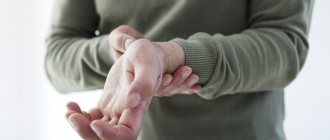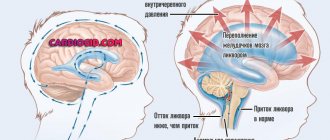Losing consciousness is a phenomenon that absolutely anyone can experience. In some cases, it does not pose a significant threat to human life and health, in others it indicates the presence of a serious disease. Thus, a clear first aid algorithm for fainting is very important knowledge that will help in a difficult situation.
Losing consciousness is a phenomenon that absolutely anyone can experience.
Fainting (syncope) is a sudden loss of consciousness as a result of a temporary decrease in blood circulation to the brain. This condition is not an independent disease, but only a manifestation of the influence of certain external conditions on the body, or one of the symptoms of an underlying disease.
Almost every second person in the world has fainted. Syncope is a common reason for visiting doctors, conducting additional tests and hospitalizations. They significantly affect the quality of life of patients and lead to adverse consequences. In view of this, assistance for fainting must be timely and effective.
Causes
Loss of consciousness is caused by a wide variety of reasons. The main ones are presented below.
Reflex (neurogenic) origin:
- emotional stress (feelings of pain, fear, anxiety, the sight of blood, laughter, etc.);
- severe cough, sneezing;
- excessive stress, heavy lifting;
- the act of swallowing, defecating, urinating;
Emotional stress is often the cause.
Hypotensive origin:
Excessive vomiting and diarrhea may affect.
- disorders of the autonomic nervous system (neurocirculatory dystonia);
- Parkinson's disease;
- Lev's disease;
- drinking alcohol;
- amyloidosis;
- taking medications that lower blood pressure;
- spinal cord injury;
- massive bleeding;
- profuse vomiting, diarrhea.
Cardiac origin:
- slow heartbeat;
- sick sinus syndrome;
- complete atrioventricular block;
- pacemaker dysfunction;
- tachycardia from the atria and ventricles;
- acute coronary syndrome, pulmonary embolism, dissection of aortic aneurysm;
- space-occupying formation in one of the chambers of the heart (tumor, thrombus).
During pregnancy, fainting occurs due to the so-called “inferior vena cava syndrome,” when an enlarged uterus compresses the vessel of the same name, thereby reducing the return of blood to the heart.
People with arterial hypotension are considered a risk group susceptible to frequent fainting.
A risk group susceptible to frequent fainting is considered to be people with arterial hypotension, a labile nervous system, and various types of arrhythmias.
The most important data for detecting the cause and based on this providing first aid for loss of consciousness are the data from the anamnesis, examination and electrocardiogram. Taking an anamnesis involves a detailed questioning about the situation and environment that preceded the syncope, what diseases the patient suffered from.
The examination includes an assessment of breathing (shallow, frequent), the nature of the heartbeat (rhythmic, arrhythmic, clear or dull tones), measurement of blood pressure (normal, low), analysis of the reaction to the environment (weakness, lethargy, drowsiness), the presence or absence of traumatic injuries. An electrocardiogram allows you to preliminary assess the work of the heart and exclude rhythm and conduction disturbances.
Causes of collapse
The causes of collapse can be very different - from past illnesses to age-related characteristics.
Causes of cardiovascular collapse:
- Large loss of blood, which may be the result of a rupture of an internal organ or serious external injuries to the body.
- Sudden change in body position while lying down
patient.
- Various past infections
diseases.
- Intoxication of the body (for example, an overdose of various drugs or food poisoning).
- Heart rhythm disturbances.
- Dehydration of the body.
- Severe electric shock.
- High ambient temperature.
- Strong doses of ionizing radiation.
| When providing medical care, it is necessary to correctly determine the cause that caused the collapse and direct all efforts to eliminate this factor. |
Can you feel fainting coming on?
A sudden onset of dizziness, weakness, numbness of the limbs, nausea.
As a rule, fainting has a sudden onset. However, sometimes you can feel it coming. The sudden appearance of dizziness, weakness, numbness of the limbs, nausea, flashing “spots”, darkness before the eyes, stuffy ears, cold sweat indicate the possibility of an imminent onset of syncope. From the onset of such symptoms to fainting, 2-10 seconds pass. At this time, you need to try to make an effort to attract the attention of others and call for help.
Signs
Fainting never occurs suddenly; it is usually preceded by a so-called pre-fainting state, which lasts from 15 to 60 seconds. The skin turns pale, cold sweat appears, dizziness, ringing in the ears, weakness and nausea are felt. Next, complete relaxation of the muscles occurs, and the person falls unconscious. During fainting, the part of the brain that is responsible for consciousness is switched off, but reflexes are preserved in most cases. Due to this, breathing function may not be impaired, and a pulse is present.
How to provide first aid for fainting?
First aid for fainting includes the following measures that need to be started as early as possible:
First, lay the patient on his back, then place something under his feet, bring ammonia to the nostrils.
- provide a horizontal position for the patient (on his back);
- place something under the lower limbs (at an angle of 30-45°) so that the head is below the knees;
- take care of fresh air if syncope occurs indoors;
- check the patient’s breathing and eliminate factors that impede this (loose the collar, belt, unfasten the tie, etc.);
- splash your face with cool water;
- bring ammonia to your nostrils (the pungent smell of which usually helps restore consciousness);
- ask about your health, if you need to call an ambulance.
The scope of emergency care for fainting in children does not differ from that in adults, except for mandatory hospitalization.
First aid mistakes
Ordinary fainting does not pose a critical threat to life and health, especially if first aid is provided correctly. But, despite the simplicity of measures to provide assistance in this condition, often people who sincerely want to be useful make mistakes, which sometimes pose a greater danger than fainting itself.
Mistake 1 – not allowing the victim to lie down. For some reason, there is a widespread belief that a fainting person should absolutely not be allowed to lie down. Nothing could be further from the truth. If you faint, you must lie down, just taking into account the fact that a person’s consciousness turns off and he falls, you need to try to make sure that the victim is not injured when he falls. Simply put, you can’t let someone fall, but you have to let them lie down.
Mistake 2 – taking medications. If fainting occurs in a crowded place, and this is what usually happens, since a large crowd of people leads to stuffiness and overheating, there will definitely be a kind-hearted person who is ready to share the pills that he carries with him “just in case.” As a rule, this is one of the heart medications, most often nitroglycerin, or an antihypertensive drug. This absolutely cannot be allowed. In case of fainting, medicinal support is not required at all, and such drugs not only will not help, but will also significantly worsen the condition, lowering the pressure that already dropped during fainting.
Error 3 – ammonia. Even in some medical sources you can find information that, as a first aid measure for fainting, you need to bring a cotton wool or a bottle of ammonia to the victim’s nose. This is mistake. Ammonia, which has a pungent odor, can help at the pre-fainting stage, when a person feels impending lightheadedness, but has not yet lost consciousness. An unconscious person cannot recoil; the caustic vapors of ammonia, when inhaled, easily cause a chemical burn to the mucous membrane. In addition, ammonia can lead to reflex spasm and respiratory arrest.
Mistake 4 – hitting the victim on the cheeks. This is also an old method of reviving a person who has lost consciousness, and has been used more than once in cinema. But what is good for cinema is not always useful in life. Weak slaps in the face will not help, but strong ones can cause damage - when a person is unconscious, it is easy to miscalculate the force and cause a bruise to soft tissues, and this is even in the best case. This treatment is worse than the disease itself - after fainting, the victim recovers within an hour, and the bruises take much longer to disappear.
Mistake 5 – splashing water on the victim. A useless action in the warm season and potentially harmful in the cold season.
What to do after recovering from a fainting state?
Further tactics are determined by the presence of complaints and the severity of the general condition. The criteria for the effectiveness of first aid for fainting are the return of consciousness and normalization of hemodynamics. If the cause is obvious (stuffy, cramped room, overwork, heavy physical labor), further treatment may not be required. If the origin of syncope is unclear, it is recommended to seek advice from specialists: a neurologist, cardiologist, therapist, endocrinologist.
In case of severe condition, pain, rare breathing, palpitations, or lack of positive dynamics, immediate assistance and hospitalization with a thorough examination are recommended.
Kinds
Fainting (syncope) conditions can be divided into two most common forms (types) of fainting:
- Neurogenic – based on a reflex decrease in postural vascular tone;
- Fainting associated with diseases of the heart and large (main) vessels.
Neurogenic syncope
The most common form of fainting, which is based on a reflex decrease in peripheral vascular tone in response to environmental factors. The development of fainting is preceded by a short period. A few seconds or minutes before loss of consciousness, there is a feeling of discomfort, weakness in the legs, nausea, yawning, ringing in the ears, darkening in the eyes. Following this, the person falls or slowly sinks to the floor. Most of these fainting episodes are characterized by a rapid and complete recovery of consciousness and satisfactory well-being after the attack.
This group of fainting includes:
- Vasodepressor - most often occurs in young people in response to certain factors - pain, fear, fasting, emotional stress, the sight of blood, stuffiness, tooth extraction, sudden messages about pleasant or unpleasant things. This is the most common type of fainting and does not pose a serious threat to health or life.
- Orthostatic – occurs when there is a sudden change in body position from horizontal to vertical. In the mechanism of occurrence of this condition, a violation of autonomic neuroregulation plays an important role. When carefully examining such patients, doctors note constant complaints of feeling tired in the morning, decreased performance, constant headaches and dizziness. Orthostatic fainting can occur during the recovery period after a cold, during prolonged bed rest, in the postoperative period, as well as when certain medications (neuroleptics, antidepressants) are taken incorrectly.
- Vestibular – more often observed in children and adolescents with increased excitability of the vestibular apparatus. Occurs during a boat trip or a long stay on a swing. Fainting occurs suddenly, consciousness is restored quite quickly.
- This group also includes fainting that occurs with increased sensitivity of the carotid sinus, with irritation of the branches of the vagus nerve. In this case, there is a sharp decrease in heart rate, a decrease in blood pressure and, as a consequence, secondary insufficiency of blood supply to the brain. Such fainting is more often observed in older people, with sudden turns of the head, pressure with a pillow during sleep, or when wearing tight collars or ties.
- Situational fainting - can occur with prolonged coughing, defecation, urination, prolonged stay in the mountains, during sports, in particular when lifting weights.
Fainting associated with diseases of the cardiovascular system
Usually occur suddenly, without warning.
They are divided into two main groups:
- Fainting associated with disturbances in heart rhythm and conduction. Episodes of paroxysmal tachycardia deserve special attention.
- Fainting due to decreased cardiac output (aortic stenosis, myocardiopathy, myocardial infarction, dissecting aortic aneurysm).
All these diseases require treatment in a hospital setting under the supervision of a doctor.
Fainting can also develop with severe infectious diseases, such as toxic flu, viral hepatitis, acute dysentery, typhoid and typhus.
On this topic ▼
Heart attack (infarction)
Symptoms and first aid
As we have already said, isolated episodes of fainting are, in essence, not life-threatening. But there are reasons for alarm if you faint:
- Is a consequence of any disease of the heart and blood vessels;
- Accompanied by head trauma;
- Repeats regularly and at short intervals;
- It happens in older people when they are in full health;
- Accompanied by the disappearance of all swallowing and breathing reflexes.
In most cases, the diagnosis can be established based on a detailed interview with the patient, physical examination and ECG recording. In some cases, positional tests are performed, sometimes against the background of drug therapy.
In the presence of heart disease: Holter monitoring, ECG, CT or MRI of the brain, angiography.
The first aid poster is available by clicking the Download button after the article!
Prevention
In order to avoid the need for help with fainting, it is rational to think about its prevention. Preventive measures are developed depending on the underlying cause. Some common general recommendations include:
- increased fluid and salt intake;
- adequate rest and work regime;
- sleep at least 7-8 hours at night;
- giving up bad habits (especially excessive alcohol consumption);
- avoid long stays in stuffy rooms, periodically ensure their ventilation by opening windows;
- in the summer, use sun protection (using an umbrella, hat);
- do not overheat in solariums and saunas.
Persons with persistent arterial hypotension need to engage in special training (tilt training), yoga and other strengthening exercises.
If signs of loss of consciousness appear, it is recommended to immediately take a lying position, drink cool water, raise your legs, and clench your hands into fists. All this contributes to increased blood pressure. Close relatives should also be taught what to do if fainting occurs suddenly.
Causes of loss of consciousness
Single episodes of fainting usually do not indicate any danger, and can happen to anyone. This often happens to people of fine mental organization due to excessive anxiety or nervous strain. Those who suffer from various types of phobias and panic attacks may lose consciousness at the slightest impulse reminiscent of the object of fear (the sight of a needle or blood).
Physical exercise
Fainting can occur from intense sports activities, for example, during fast or long runs, squats, or lifting loads. For people suffering from pressure surges, such a nuisance is possible when suddenly rising from bed or throwing back their head (in the dentist's chair or in the hairdresser).
Bad habits and nutrition
The likelihood of fainting increases significantly in smokers. Due to the chronic inflammatory process in the bronchi and lungs, the blood is less saturated with oxygen and circulates poorly, resulting in the formation of venous stagnation. Particularly dangerous is a severe cough, which often plagues smokers in the morning. Excessive consumption of alcohol or energy drinks can also make you unconscious.
Even a healthy lifestyle does not guarantee dieters will not faint. Poor nutrition is especially dangerous for teenagers and older people. And if you overeat or are poisoned, severe vomiting or diarrhea may occur, threatening dehydration, which also provokes fainting.
Diseases
Loss of consciousness can be caused by a head injury that leads to a concussion. If such a condition recurs regularly, it may be a symptom of anemia, cardiovascular diseases, pathologies of the respiratory system, or osteochondrosis of the cervical spine.
Fainting in diabetes
This disease can lead to such a result as hypoglycemic coma. Outwardly, it may resemble a normal loss of consciousness. This condition occurs due to a sharp decrease in blood sugar levels, which is a consequence of exceeding the dose of insulin and other factors.
Before the onset of hypoglycemic coma, the skin begins to turn pale and moist, and a strong feeling of hunger appears. The main thing in this situation is to make every effort to prevent loss of consciousness. To do this, the person needs to be given something sweet (jam, honey, sugar). But if fainting does occur, then it is necessary to call an ambulance.
Concept and causes of fainting
Fainting should be understood as a short-term loss of consciousness, which was caused by oxygen starvation of the brain.
Oxygen starvation itself can develop for several reasons. Factors that can lead to this condition are various congenital and acquired diseases of the blood vessels, heart, viral diseases and poisoning, which are accompanied by significant intoxication and high body temperature. In some cases, wearing excessively tight clothing, emotional shock, high indoor or outdoor temperatures, and low oxygen levels in the air can lead to fainting.











